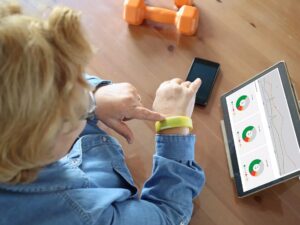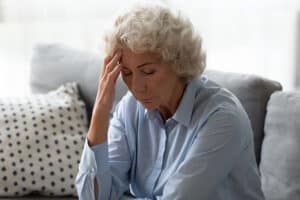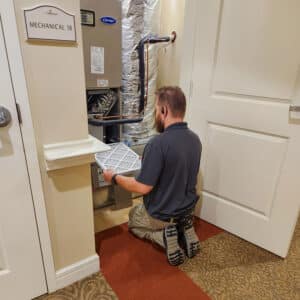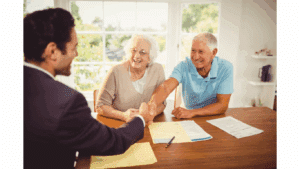
As we age, sleep becomes even more important, not just for rest and recovery but for how our bodies respond to medications like semaglutide. This treatment supports weight and blood sugar management, but poor sleep can interfere with its benefits. In older adults, disrupted rest can alter hormones that control appetite, metabolism, and energy, potentially reducing semaglutide’s fat-loss potential. On the other hand, consistent, high-quality sleep helps the body use the medication more effectively. It supports steady blood sugar, balanced hunger signals, and improved energy use. Many people focus on diet or dosage but forget that good sleep is one of the simplest ways to enhance treatment results. Understanding how rest interacts with semaglutide can help older adults make small, manageable lifestyle adjustments that lead to better long-term outcomes, not only for weight control but for overall well-being and vitality.
The Relationship Between Sleep Patterns and Semaglutide Fat Loss
Sleep and metabolism are closely connected. For seniors using semaglutide, proper rest helps balance hormones, support recovery, and regulate appetite. In contrast, poor or fragmented sleep can interfere with glucose control and slow down the fat-loss process.
How Sleep Quality Influences Semaglutide Efficacy
High-quality sleep helps the body maintain stable blood sugar levels and enhances how it responds to semaglutide. This medication mimics the GLP-1 hormone, which helps regulate appetite and insulin release. When older adults don’t get enough rest, the body may produce more cortisol, a stress hormone that raises blood sugar and makes weight management harder. People who sleep well often report fewer cravings, steadier appetite control, and better energy during the day. Telehealth programs, such as those offered by The HCG Institute, often combine semaglutide treatment with lifestyle guidance. Including sleep advice in these plans can be especially helpful for older adults who struggle with nighttime hunger, restless sleep, or early-morning fatigue.
Role of Circadian Rhythms in Weight Loss Outcomes
The body’s internal clock, known as the circadian rhythm, influences metabolism, hunger, and energy use throughout the day. For older adults, maintaining regular routines becomes particularly important. Disrupted sleep patterns or late-night meals can interfere with semaglutide’s ability to regulate appetite hormones. A stable bedtime and wake-up schedule help keep these rhythms in sync, allowing the medication to work more effectively. Many healthcare providers now recommend aligning medication and mealtimes with daily routines. This approach helps reinforce circadian stability, leading to more predictable energy levels and smoother metabolic function.
Sleep Duration and Changes in Body Composition
Sleep duration matters at every age, but especially for seniors. Short or irregular sleep can slow metabolism and increase hunger hormones like ghrelin, while long, restorative sleep supports leptin, the hormone that signals fullness. Older adults who average seven to nine hours of good rest per night often see better results with semaglutide, particularly in reducing abdominal fat. This benefit likely comes from balanced hormones and more stable energy use throughout the day. Some telehealth programs even help patients track both sleep quality and body composition, ensuring that healthy rest patterns are part of their overall progress.
Optimizing Fat-Loss Results: Practical Strategies for Older Adults
Good sleep habits, balanced meals, and gentle physical activity can significantly improve how the body responds to semaglutide. These steps not only support fat loss but also enhance energy, mood, and long-term health.
Establishing Healthy Sleep Habits During Semaglutide Treatment
A consistent sleep schedule helps regulate appetite and energy. Try to go to bed and wake up at the same time every day, even on weekends. Make your bedroom a comfortable, relaxing space that is dark, cool, and quiet. Avoid caffeine, alcohol, or heavy meals in the evening, and limit screen time before bed so your body can naturally release melatonin. Gentle stretching, reading, or calm breathing before sleep can help you unwind. Keeping a simple sleep diary can reveal patterns that affect your rest, such as late dinners or irregular bedtime routines.
Managing Sleep-Related Side Effects
Some older adults using semaglutide may notice mild sleep disturbances due to nausea or digestive discomfort. Eating smaller meals earlier in the evening can help the body digest food before bedtime. Stay well hydrated during the day, but limit fluids close to bedtime to reduce nighttime awakenings. If mild nausea persists, light meals with lean proteins and fiber may ease symptoms. Relaxation practices like meditation, prayer, or listening to soft music can help calm the mind and lower stress hormones that interfere with sleep. If issues continue, discuss timing adjustments or additional guidance with your healthcare provider.
Lifestyle Factors That Support Fat Loss in Older Adults
Healthy habits make semaglutide more effective. Balanced nutrition: Focus on proteins, vegetables, and whole grains to stabilize blood sugar. Light physical activity: Walking, swimming, or stretching improves insulin sensitivity and encourages deeper sleep. Stress management: Quiet time, social engagement, and hobbies help reduce cortisol and improve emotional well-being. Limit alcohol and processed foods, as these can interfere with metabolism and sleep quality. Together, these small steps create a sustainable lifestyle that enhances the fat-loss benefits of semaglutide and supports overall health.
Conclusion
For older adults using semaglutide, good sleep may be one of the most valuable tools for achieving steady, healthy weight loss. Consistent, high-quality rest helps regulate hormones that control hunger and metabolism, the same systems semaglutide targets. Poor or irregular sleep can weaken these effects, while healthy sleep routines can make the medication more effective. By focusing on regular rest, balanced nutrition, gentle activity, and routine, seniors can support both fat-loss goals and long-term vitality. In short, better sleep means better results, for both semaglutide treatment and overall well-being.








